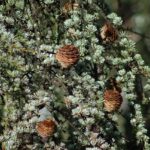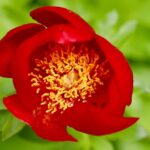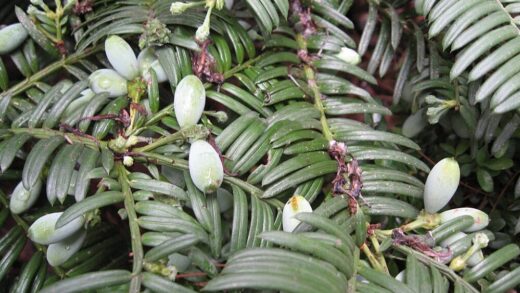Proper pruning and cutting back are essential maintenance practices that transform dusty miller from a potentially untidy plant into a dense, well-formed, and visually striking specimen. While the plant can certainly survive without any trimming, a strategic approach to pruning will vastly improve its aesthetic appeal by encouraging a compact, bushy habit and preventing the leggy growth to which it can be prone. Furthermore, timely trimming and deadheading can redirect the plant’s energy into producing more of its coveted silvery foliage, ensuring it remains a standout feature in the garden throughout the entire growing season.
The primary reason for pruning dusty miller is to control its shape and promote denser growth. Without intervention, the plant’s stems will continue to elongate, leading to a sparse, open structure, particularly at the base. The simple act of pinching or trimming the tips of the stems forces the plant to redirect its growth hormones. Instead of putting energy into upward growth from the terminal bud, the plant is stimulated to activate the lateral (side) buds further down the stem. This results in the development of new branches, leading to a much fuller, more mounded, and attractive form.
Another important aspect of pruning is the removal of flower stalks. During the summer, dusty miller will often produce clusters of small, mustard-yellow, daisy-like flowers. While not entirely unattractive, they are generally considered to be of little ornamental value and can detract from the cohesive, silvery appearance of the foliage. More importantly, the process of flowering and setting seed consumes a great deal of the plant’s energy. By promptly removing these flower stalks as they appear, a practice known as deadheading, you encourage the plant to continue channeling its resources into what it does best: producing beautiful leaves.
The timing and intensity of pruning can be adapted throughout the season to meet the plant’s needs. Gentle pinching can be done on young plants early in the season to establish a good framework. A more significant shearing or cutting back may be required in mid-summer if the plants have become overgrown or leggy during a period of rapid growth. This rejuvenation pruning can feel drastic, but the plant responds with remarkable vigor, quickly pushing out a fresh flush of dense growth that will look pristine through the autumn.
Finally, pruning is also a matter of basic plant hygiene. Regularly removing any leaves or stems that are yellow, brown, or damaged helps to maintain the plant’s tidy appearance. This also improves air circulation through the plant, which is a key strategy in preventing the development of fungal diseases. A well-pruned plant is not only more beautiful but is also healthier and more resilient, making this simple task a cornerstone of effective dusty miller care.
More articles on this topic
The initial pinch
The practice of “pinching” is the first and most fundamental pruning technique that should be applied to young dusty miller plants. This simple action, performed early in the plant’s life, has a profound impact on its future growth habit, setting the stage for a compact and bushy form. Pinching is best done when the young plants are about four to six inches tall, shortly after they have been transplanted into the garden and have had a chance to establish themselves. At this stage, they are actively growing and will respond quickly to the intervention.
The technique itself is straightforward. Using your thumb and forefinger, or a small pair of clean snips, simply remove the very top portion of each main stem, including the terminal bud and the top one or two sets of leaves. This removal of the apical meristem, which is the primary growing point, breaks the plant’s apical dominance. This hormonal signal that encourages upward growth is interrupted, and the plant’s energy is redirected to the dormant lateral buds located at the nodes further down the stem.
The plant’s response to being pinched is to activate these side buds, which then begin to grow and form new branches. Instead of a single, tall stem, you will now have multiple side stems developing. This creates a much denser, more branched structure from the base of the plant. Each of these new side stems will eventually develop its own terminal bud, and the process can be repeated on these new stems if desired, to create an even more compact and intricate framework.
This initial pinch is a one-time investment that pays dividends throughout the entire season. A plant that has been pinched early will naturally grow into a fuller, more rounded mound, requiring less corrective pruning later on. It is a proactive step that shapes the plant’s future, preventing the leggy, open habit that can occur if the plant is left to its own devices. This simple, two-second action is one of the most effective things a gardener can do to ensure a beautiful dusty miller display.
More articles on this topic
Deadheading for foliage focus
As summer progresses, dusty miller will naturally enter its reproductive phase and begin to produce flower stalks. These stalks emerge from the center of the plant and carry clusters of small, yellow flowers. From the plant’s perspective, this is the most important part of its life cycle, as its goal is to produce seeds for the next generation. From a gardener’s perspective, however, these flowers are often seen as a distraction from the main event, which is the stunning silver foliage.
The process of removing these flowers is called deadheading. It is best to remove the entire flower stalk as soon as you notice it forming, well before the flowers have a chance to open. Use a pair of clean pruning shears or scissors and follow the stalk down to its point of origin, deep within the foliage, and make a clean cut. Simply snapping off the top cluster of flowers is not as effective, as it leaves the unsightly stalk in place. Removing the entire stalk maintains the plant’s neat and uniform appearance.
The primary benefit of deadheading is that it conserves the plant’s energy. The production of flowers, and subsequently seeds, is an incredibly energy-intensive process. By preventing the plant from completing this cycle, you effectively trick it into remaining in a vegetative state of growth. All of the energy that would have been spent on reproduction is instead redirected back into producing more leaves and stems. This results in a plant that remains fuller, lusher, and more vibrant for a longer period.
Consistent deadheading throughout the flowering period will significantly prolong the ornamental quality of your dusty miller. Make it a regular habit to inspect your plants every few days during the summer and snip off any emerging flower stalks. This small but consistent effort prevents the plant from “bolting” (a term for when a plant prematurely goes to seed), keeps the focus squarely on the beautiful silver leaves, and encourages a continuous production of fresh, healthy foliage all season long.
Mid-season rejuvenation pruning
There often comes a point in mid-summer, especially after a period of favorable growing conditions, when dusty miller plants can start to look a bit tired, overgrown, or leggy, despite earlier pinching. The lower parts of the stems may have become woody and bare, and the overall shape may have lost its compact, mounded form. This is the perfect time for a more substantial rejuvenation pruning, sometimes referred to as shearing or cutting back, to refresh the plant and stimulate a new flush of growth.
This process involves cutting the entire plant back by approximately one-third to one-half of its height. Using a clean pair of hedge shears or hand pruners, trim the plant evenly all over, much like giving it a haircut. This may seem harsh, and the plant will look quite stark for a week or two immediately following the pruning, but this is a necessary step for its renewal. This hard pruning removes the older, woodier stems and any leggy growth, encouraging the plant to break new buds from further down the stems.
The best time to perform this mid-season cutback is typically in the middle of the growing season, around mid-July to early August. This timing allows the plant ample opportunity to regrow and look full and attractive for the remainder of the summer and into the autumn. It is a good idea to water the plant well a day or two before pruning to ensure it is not stressed. Following the prune, you can provide a very light dose of a balanced, diluted liquid fertilizer to give it the energy it needs to push out new growth quickly.
The plant’s response to this shearing will be a vigorous burst of new growth from the base and along the remaining stems. This new growth will be fresh, dense, and brilliantly silver, effectively renewing the plant for the second half of the season. This single act can make a dramatic difference in the late-summer appearance of your garden beds, ensuring your dusty miller remains a neat, tidy, and vibrant component of your design right up until the first frost.
Pruning for perennial care
For gardeners in milder climates (USDA Zones 8 and above) where dusty miller is grown as a perennial, a specific pruning strategy is required in the spring to manage the plant’s woody growth. Over the winter, the plant’s stems become progressively more woody and tough. If left unpruned, new growth will emerge primarily from the tips of these old, woody stems, resulting in a tall, top-heavy plant with a bare, unattractive base. A hard spring pruning is essential for rejuvenating the plant.
The ideal time for this spring pruning is after the last danger of hard frost has passed and you begin to see the first signs of new growth emerging from the base of the plant. This new growth is your cue that the plant has survived the winter and is ready to begin its new season. Waiting until this point ensures that you are not cutting back the plant too early, which could expose it to damage from a late frost.
Using a sharp, clean pair of pruners, cut the entire plant back hard. You should remove all of the old, woody stems from the previous year, cutting them down to a height of about four to six inches from the ground. It is important to look for the small new buds emerging from the lower parts of the old stems or directly from the crown of the plant. Make your cuts just above a set of these new buds or leaves. This removes the old, tired structure and encourages the new growth to come from the base, leading to a much fuller and more attractive plant.
This annual hard prune is the single most important task for maintaining dusty miller as a healthy, long-term perennial. It prevents the plant from becoming a leggy, woody sub-shrub and maintains its desirable compact, mounding habit year after year. After this spring pruning, the plant will quickly regrow, and you can then follow the standard practices of pinching and mid-season trimming as needed throughout the new growing season to keep it in perfect shape.








